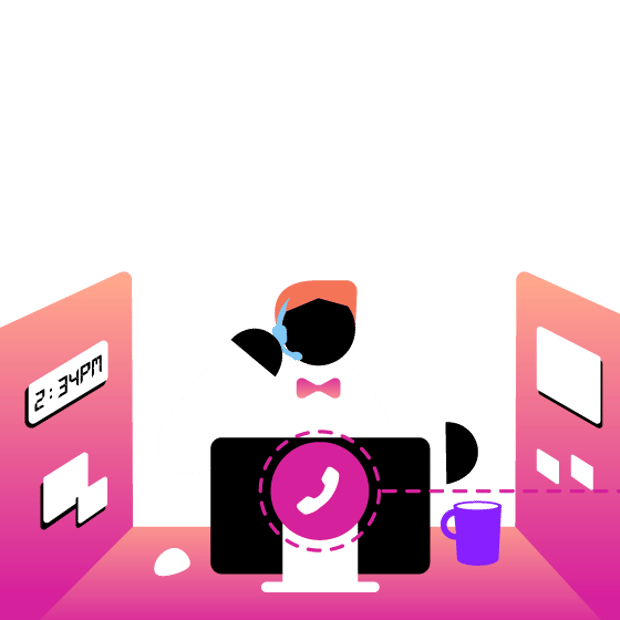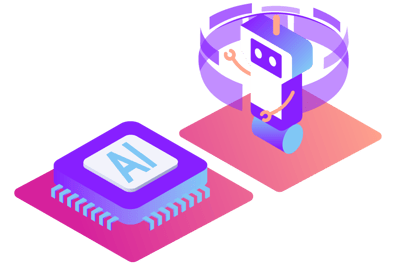Call Routing: What It Is, How It Works, and Why Your Business May Need It
Whether you’re managing a helpdesk, a sales team, or a small business, you need to answer quickly when a customer makes contact. You also need to handle queries as fast as possible to ensure caller satisfaction and maximum employee productivity — and effective call routing can help. To avoid long wait times and callers being transferred between multiple departments, a good call routing system is essential.
But what exactly do we mean by call routing, and how can it help your business? Let’s find out.

What Is Call Routing?
Call routing is a call management process that ensures inbound calls are directed to the right person or department at a business or call center. When a customer gets in touch, the system uses predefined rules and criteria to route the call to the correct place.
Often used in conjunction with automatic call distribution or ACD technology, phone routing systems gather information from the caller via an auto attendant or IVR (interactive voice response) menu. They use this to determine where the call should go before placing it in a queue ready for the relevant employee to pick up.
In the early days of call routing, IT professionals were often required to program the phone system. Modern software, however, makes it possible for anyone to set up a call flow system and adjust the routing criteria when needed.
Call routing rules can be based on factors like current or predicted call volumes, employee schedules and availability, and business hours. You might also assign calls according to priority level, skills of those available to answer, and the customer’s language preference.
Routing isn’t just for call centers, either. All kinds of organizations can use it to match customers with the right person or team.
How Does Automated Call Routing Work?
Technically, you don’t need to know how call routing actually works. Once you’ve set the rules, your phone system does its job before your phone rings. But it can be useful to be aware of what’s going on under the hood — so here goes.
Qualifying
When someone calls your business, the first thing that happens is the system collects data from the caller to find out their intent. It may identify them from their caller ID or from details in a connected CRM. It will also recognize if they dialed a specific department number.
Now the call is typically sent to the virtual receptionist, auto attendant, or IVR menu, which offers a pre-recorded greeting and asks the caller to choose from a menu of options. Callers make their responses by speaking or tapping their keypad, selecting a particular department or stating what they want to do.
Queueing
The system will then use the caller’s responses to place the call in the appropriate queue, per your preset rules.
Calls may be prioritized based on the nature of the query or how long the caller has been waiting. Systems can also monitor employee availability and transfer each call to the most suitable recipient. The caller will hear hold music or a message during this time.
Distribution
Next, the ACD system distributes incoming calls among your employees or teams.
Again, this happens according to the routing rules you’ve put in place. For example, you may use skills-based routing or a rotary method. Calls may be forwarded to another person or department if the desired recipient is unavailable, or callers can be directed to leave a voicemail.
Types of Call Routing Rules and Methods
Now, we’ll take a look at the various types of call routing rules. You can choose your method (or a combination of methods) based on factors like call volume and team size, and adjust the rules when necessary.
Fixed Order
Fixed order routing, also called sequential or list-based routing, means that calls are always routed according to a set order.
When a call comes in, the system will always send it to the person at the top of the list. It will only go to the next one(s) if the first is unavailable. If nobody is available, the caller may be invited to leave a voicemail.
Skills-Based
This method assigns calls based on individual skill sets. Using the information provided to the IVR, the ACD selects the person best equipped to handle the inquiry.
For example, if a caller needs a refund, the call will go to someone who’s authorized to process it. Reps and employees may also be selected for their product knowledge or qualifications.
Time-Based
With time-based routing, calls are distributed within specific time periods, usually standard business hours or during an employee’s shift.
This ensures nobody receives calls outside working hours. It’s also useful if you have call centers in different time zones. For example, if someone calls your helpdesk when it’s closed for the night, the call can be sent to an overseas branch that’s still open.
 Read now
Read now
Rotary or Round Robin
This method rotates the call assignment so that calls are shared more evenly.
Instead of using a fixed-order list, the ACD gives each employee a turn before circling back to the first person in the queue. It means that everyone has an opportunity to make a sale or sharpen their support skills, while nobody gets overwhelmed.
Intelligent Call Routing
An intelligent routing system uses AI and machine learning to predict the most appropriate call path. It’s based on live and historic customer data, plus customer and employee behavioral analysis. For instance, a call could be assigned based on an existing customer relationship, or on customer value or status.
Intelligent call routing can track the amount of calls and talk-time for each agent in a call center. The ACD will then distribute new calls to those with the lowest stats. This method can also help you to anticipate common issues and plan your call routing strategy accordingly.
The Benefits of Good Call Routing for Small Business
You’ve probably already realized that call routing brings a raft of benefits. Let’s look at the key advantages for employees and customers, and the business overall.
For Your Business
A good call routing service ensures maximum efficiency for the qualifying, queueing, and distribution processes. This reduces time-to-answer and average handle time, increasing the number of inquiries a small business can deal with in a day and keeping customers happy and loyal.
This productivity boost can lead to higher revenue. Plus, you may not need to hire extra agents to manage high call volumes. Nor do you need a human receptionist to manually distribute calls. You can establish a global presence with 24/7 service, and easily manage a remote call center.
Optimized call flows can also reduce the average cost per call, since there are lower call abandonment rates and fewer missed calls. If you’re offering toll-free numbers for your customers, that means you’re footing the bill — so it’s in your interests to keep call queues to a minimum.
For Your Employees
When you implement call routing for your team, the system either sticks to a fixed or rotary order or uses its intelligence to choose the best destination for the query. This means a fair and balanced workload for everyone, so nobody gets stressed when call volumes rise.
With information gathered by a phone system and pulled in from the CRM, employees have the key details at their fingertips. They know that a call will only come to them if they have the knowledge and skills to handle it, and it’s rewarding to resolve queries quickly.
Since call routing reduces the need for callers to wait on hold or get passed around, support agents are less likely to experience irate customers. And with time-based routing, nobody has to field calls when they’re off shift. Happy workers = happy customers.
For Your Customers
The longer a customer waits on hold, the more frustrated they become. Effective call routing can significantly reduce wait times by monitoring agent availability and automatically assigning calls. The best systems can also provide estimated wait times and queue position updates, and enable customer callbacks.
When the call is answered, the agent already has the details at hand from the IVR menu — so there’s no need for customers to repeat themselves. Skills-based routing improves first-call resolution, while knowledge of previous interactions leads to a more personalized experience.
According to Salesforce’s sixth annual State of the Connected Customer report, 61% of customers prefer self-service for simple issues. IVR menus can often help callers resolve basic queries or direct them to online help, passing the call to a human if needed. This way, even a small business can provide 24/7 service.
Call Routing Software Could Take Your Business to the Next Level
Call routing brings many advantages to a small business, from increased employee productivity to improved customer loyalty and positive brand reputation. Of course, you’ll need the right software so you can customize your routing service and easily make changes to the rules.
The best call routing software operates as a cloud-based application, so your teams can access it from almost anywhere — even when everyone’s working remotely. The ability to route calls between different branches and time zones sets you up for global expansion.
Voice over internet protocol (VoIP) call routing is typically offered as a feature of a business communications system or call center software. It will often also be linked to analytics to help you evaluate your call routing system and adjust the strategy to keep employees and customers happy.
Vonage Business Communications (VBC) includes a range of call management features to help you ensure calls reach the right people in your business. The Virtual Receptionist, Receptionist Console, and a selection of Never Miss a Call functions are just a handful of examples.
Reach out to a Vonage expert today to learn more.
Contact Us
Let's connect!
Want to know more about call routing for your call center or business? We’re here to help! Call us at 1-844-365-9460, or fill out this form! A dedicated specialist will help guide you in learning about:
- How call routing can match customers to the right agent or employee who can best handle their issue or question
- The types of call routing systems and how to pick the right one based on factors like call volume, team size, and more
- The potential business benefits of call routing, including increasing the number of inquiries a small business can deal with in a day and keeping customers happy and loyal
Thanks for reaching out!
We'll get back to you as soon as we can. In the meantime, feel free to explore more about Vonage and how we're making communications more flexible, intelligent, and personal so our customers can stay ahead.